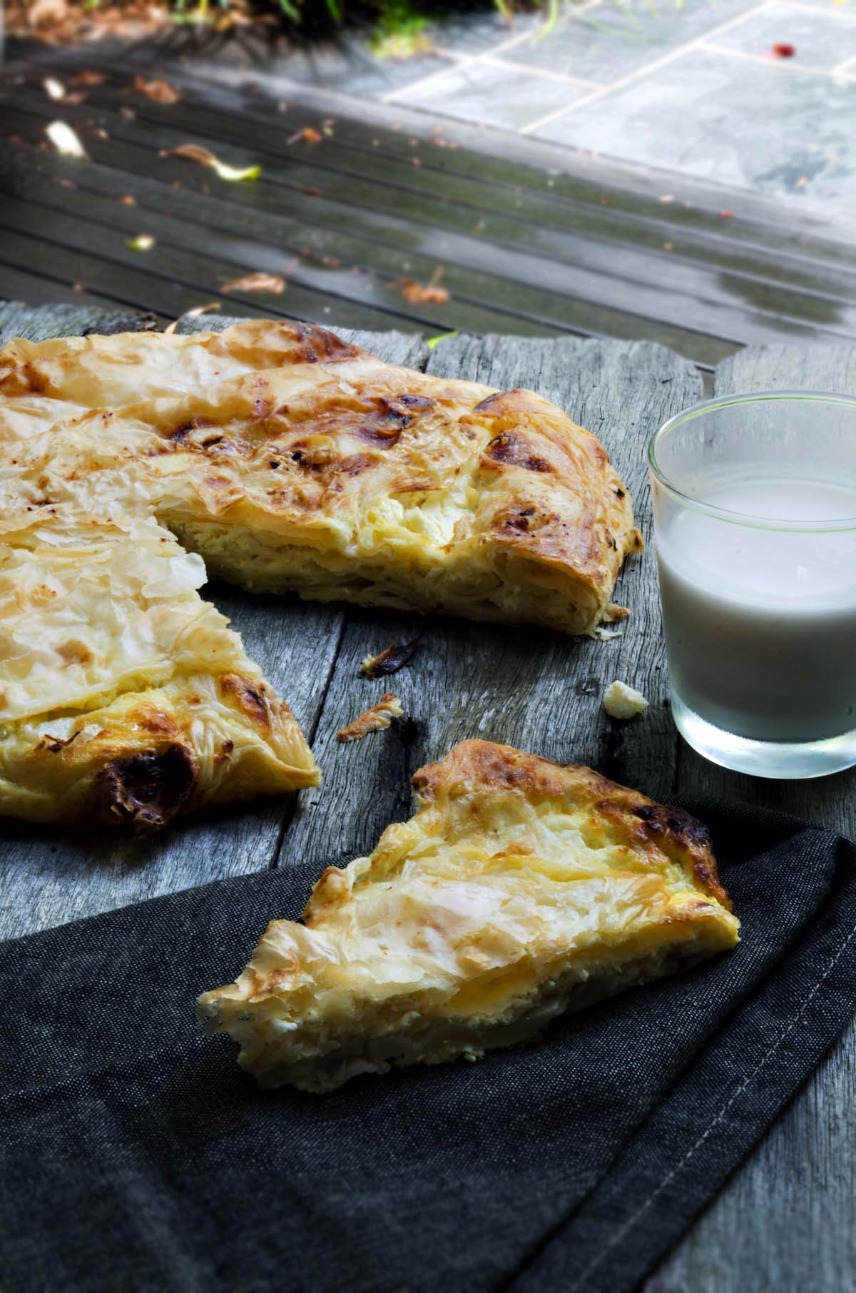A traditional filled pastry dough that can be used to make both sweet and savory borek pastries, popular in Turkey and surrounding regions.
Borek Dough
This recipe includes two types - one with feta and mint for a savory cheese borek, and one with spiced meat and potatoes for a heartier borek. The dough is thin yet sturdy enough to contain varied fillings.
Ingredients
For the dough: * 500 g plain flour * 1 tsp salt * 300 ml water (approx) * vegetable oil
For the cheese filling: * 200 g cottage cheese * 50 g feta cheese, crumbled * 1 egg, lightly beaten * vegetable oil
For the meat filling: * 1 tbsp oil * 1 small onion (80 g), finely diced * 250 g beef mince * 1 small potato (80 g), diced to 5 mm pieces, blanched for 1 minute in boiling water, drained * 1 clove garlic, finely grated * ½ tsp rosemary, finely chopped * ½ tbsp smoked paprika * ½ tbsp Vegeta, or salt
Directions
- Place the flour and salt into a large mixing bowl. Gradually add the water a little at a time, mixing with your hand, until the dough comes together. You may not need all of the water. Knead the dough for about 5 minutes until soft and elastic.
- Divide into four and flatten to about 2½ cm or an inch. Take a bowl big enough to hold all four pieces of dough when you stack them on top of one another (I used a small saucepan). Pour a little vegetable oil into the bowl, place one piece of pastry into it, pour a little more oil over the it and repeat until all four are in the bowl. Pour enough vegetable oil over the top to virtually cover the stack of dough. Set aside for half an hour while you make the cheese filling.
- Place both cheeses into a mixing bowl and stir through the beaten egg.
- Preheat the oven to 200°C.
- To prep the work surface you need to spread a thin layer of vegetable oil all over it, so make sure you are using something like a stone bench top or laminate. Don’t go oiling up your wooden table! Take one disc of pastry from the oil, scrape off the oil, then place it onto your oiled work bench. With oiled hands, flatten the disc from the inside to outside until it is about 5 mm thick. Then place your fingers under the edge, gently grab, lift and stretch the dough outwards. Working your way around all of the edges, you’re basically stretching the disc to a diameter of 1 metre. It is quite elastic so just make sure your nails don’t pierce the dough otherwise it’ll tear, but no drama if you have a few holes.
- The dough needs to be so thin that you can see through it. Once you reach the required diameter take one side of the large disc and fold it towards (and just over) the centre.
- Work your way around the disc, lifting and folding 4 more times to form a rough pentagon. Lift the folded pastry and set is aside as you make and stretch another disc just like the first.
- Once the second disc is stretched place the first folded one in the centre, as shown above. Take a knife and cut the thicker edge of the second disc away, discarding it. Leaving the thick edge intact will give you clumps of dough in the cooked burek, which you don’t want. Take the cheese filling and spread it over the folded dough in the centre.
- As you did with the first disc, fold the edges over the cheese mixture to form a rough pentagon. Gently work your fingers underneath the uncooked burek so you can lift it onto a baking pan.
- Bake for 30 minutes, or until golden. As soon as it comes out of the oven drizzle the top with a little water and oil then cover with a cloth. Allow it to sit, covered, until it cools. This helps it set.
- To serve, cut the burek into 12. Traditionally you have it with a glass of cold buttermilk.
- While the first one is cooking you need to repeat the process with the remaining dough and the cooled meat filling, to make the second burek.
- Serve with ajvar – recipe here.

